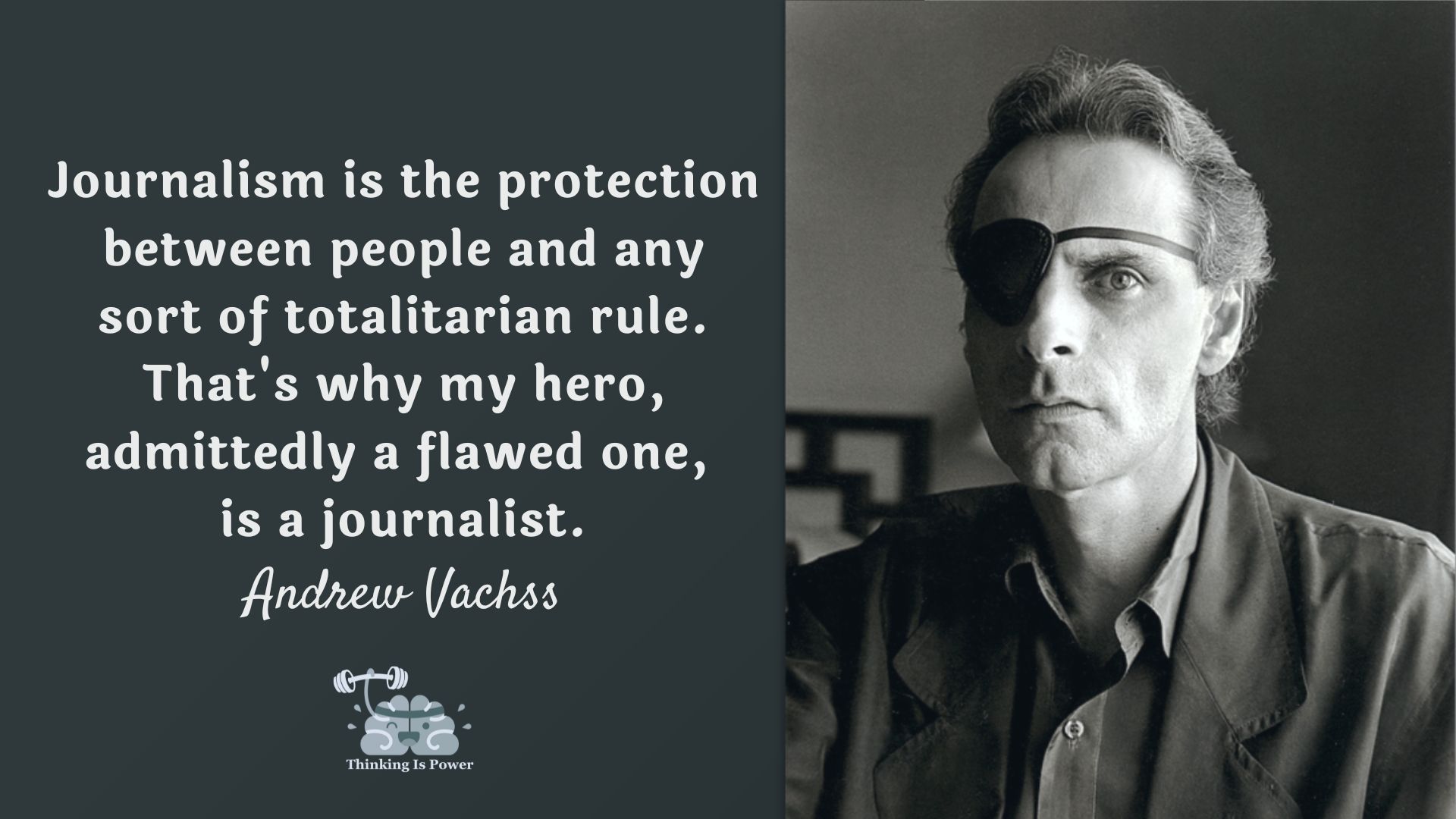It wasn’t too long ago that most Americans sat in front of their TVs every night to hear Walter Cronkite tell them, “That’s the way is it.” They read their local newspaper every day, and maybe the Sunday New York Times. Professional journalists acted as gatekeepers, sorting through the information of the day to determine what was most important and what was true. It wasn’t a perfect system, but nothing is. But the result was that most Americans had the same basic understanding of reality and a common set of facts from which to make decisions.
For better or worse, that’s not the world we live in today. The gatekeepers are gone, and we each get to curate our own news. We prefer information that confirms what we already believe, and algorithms are more than happy to comply to keep us engaged.
The problem is, there’s a firehose of information out there, and it can be challenging to know who to trust. News, opinion, propaganda, ads, satire, and fake news can all look the same. And politically motivated attacks on journalism to deflect criticism haven’t helped, either. So, we retreat into tribalism, only trusting the sources that support our worldviews, or decide that it’s all fake and none of it can be trusted.
Journalism provides citizens with the information they need to make good decisions for themselves and their communities, and is essential for a functioning democracy. Like other reliable ways of knowing, such as science, journalism is a process that rewards truth telling, corrects mistakes, and punishes fraud. It’s in our best interests to have healthy news diets. Good information is empowering….. and we don’t want to be fooled by misinformation.
(Learn more about how to fact check.)
That is why I’m thrilled to share this piece about journalism, written by a professional journalist (and friend!). She agreed to write a guest post to help all of us understand the work a journalist does to keep the public informed.
What is a journalist?
Journalists are trained to gather information and report it to the public. There are different types of journalism: investigative, news, feature-reporting, reviews and columns.
Many respected journalists are members of the Society of Professional Journalists and follow their Code of Ethics, which has four key principles (summarized below):
- Seek truth and report it: Be honest, fair and accurate
- Verify information
- Clearly identify sources
- Hold those in power accountable
- Provide access to source material when appropriate
- Never plagiarize
- Minimize harm: Treat everyone with respect
- Show compassion for those who may be impacted by a story
- Act independently: Serve the public
- Avoid conflicts of interest that may compromise integrity or damage credibility
- Remain neutral
- Be accountable and transparent: Take responsibility for one’s work
- Explain ethical choices and process
- Respond quickly to questions about accuracy, clarity and fairness
- Acknowledge mistakes and correct them promptly
How does a journalist gather news?
In this piece, we’ll be focusing on how investigative and news journalists do their job – which is, at its core, to tell fact-based stories.
Step 1: Find a story.
There are several ways journalists find story ideas. Sometimes viewers or readers write into newsrooms with suggestions. Other times, reporters find stories through word-of-mouth or on social media.
Journalists often search through community groups on Facebook to see what people are talking about to gauge what stories people may be interested in.
News reporters often look at government agendas to find story ideas. For example, is the city council going to approve millions of dollars to construct a new stadium? That’s something people who live in that community will want to know about.
Journalists also constantly read work from other reporters in competing media outlets, such as newspapers, magazines and broadcast news affiliates. Sometimes, a journalist will be inspired by another news report and make the story their own by interviewing other people or expanding on the topic.
On any given day, a journalist may be required to pitch up to five stories to the editorial team to see if they like one enough to pursue. The team will base their decision on several factors. Is it timely? Will the people needed to tell the story agree to be interviewed? Why would viewers or readers care about the story or topic?
Step 2: Gather elements for the story.
Once editors give a journalist the green light to pursue a story, the reporter begins gathering elements, such as interviews, video, photos, and anything else that will make the piece come to life.
Interviews are essential to telling a compelling story. Several factors go into deciding who to interview. For example, who is impacted? Many stories have at least two sides, and it’s important to represent the different views to the audience. In addition, experts can help provide context and add legitimacy to the story. For example, if a tornado rips through a town, interviewing someone who lost their home will help readers relate to the emotion of the story, while hearing from a cleanup crew will provide context about what the community is doing to help others after the disaster. A meteorologist can help the audience understand the conditions that led to the formation of the tornado.
Sometimes, people decline interviews or don’t respond to a journalist’s request by the deadline. In these instances, the journalist might instead gather facts from public documents.
Step 3: Put the story together.
Once interviews are completed, journalists spend hours logging before beginning the writing process.
Logging is the process of transcribing the interview from start to finish, which can take anywhere from 30 minutes to several hours. It’s important to log interviews in order to directly quote and write the story accurately.
Journalists then begin writing their stories, which often takes hours to complete. While writing, journalists are mindful of fairness, making corrections if one side is given more interview time than the opposing interview.
Once the story is written, it’s given to an editor – sometimes several editors – to review. Editors check the piece for accuracy, fairness and proper attribution of facts.
When the editor gives the piece a green light, it can then be published.
Why should we trust journalists?
There are countless websites that publish articles online, many of which are shared widely. As a news consumer, it can be challenging to determine which are credible sources of information, and which aren’t. In general, national and local newspapers, TV stations, and radio stations are generally more credible than bloggers and lesser known sites.
Credible news outlets employ professionals.
Reputable news sources have the resources to employ journalists, fact checkers, and editors who ensure the information is accurate.
Journalists who work for credible news organizations are held to a high standard. Many of them follow the SPJ Code of Ethics, as outlined above. There’s tremendous pressure to have accurate information, and there are plenty of staffers working to make sure the facts are correct.
In short, they’re hired to seek the truth and report it, and are always working to earn the public’s trust.
Credible news outlets correct errors.
While credible news organizations do their best to ensure their stories are accurate, mistakes happen. Importantly, good journalism acknowledges and corrects for errors.
If a factual error was made in an article, a correction is generally issued at the bottom. In a broadcast news report the correction is usually made on air as soon as possible.


TIP’s final thoughts
While a healthy level of skepticism is a good thing, too many of us have been told “mainstream” news organizations aren’t trustworthy and have retreated into information ecosystems that tell us what we want to hear. This isn’t skepticism, it’s cynicism. And the result is that we are less informed, or even misinformed, about the world we live in.
No news organization, or journalist, is perfect. But the process of journalism is self-correcting: Accuracy is rewarded, errors are corrected, and fraud is punished. Professional journalists are doing their best to give the public accurate and useful information. Dismissing their news reports because we’ve been told “the media” is lying or biased is not to our benefit.
This site’s premise is that thinking is power. But thinking requires knowledge and information. So it’s in our best interests to have healthy and reliable media diets.
Special thanks to Liz for writing this story to help TIP readers understand what journalists do!

I couldn’t refrain from commenting. Exceptionally well written!
Thank you!
Melanie
Pingback: Zay Arif Gp 9A 2 – Group 1: International Examiner
Loved it! It was so informative and well-written! It gave me everything I needed to know and more:) 5 stars to the person who wrote this!